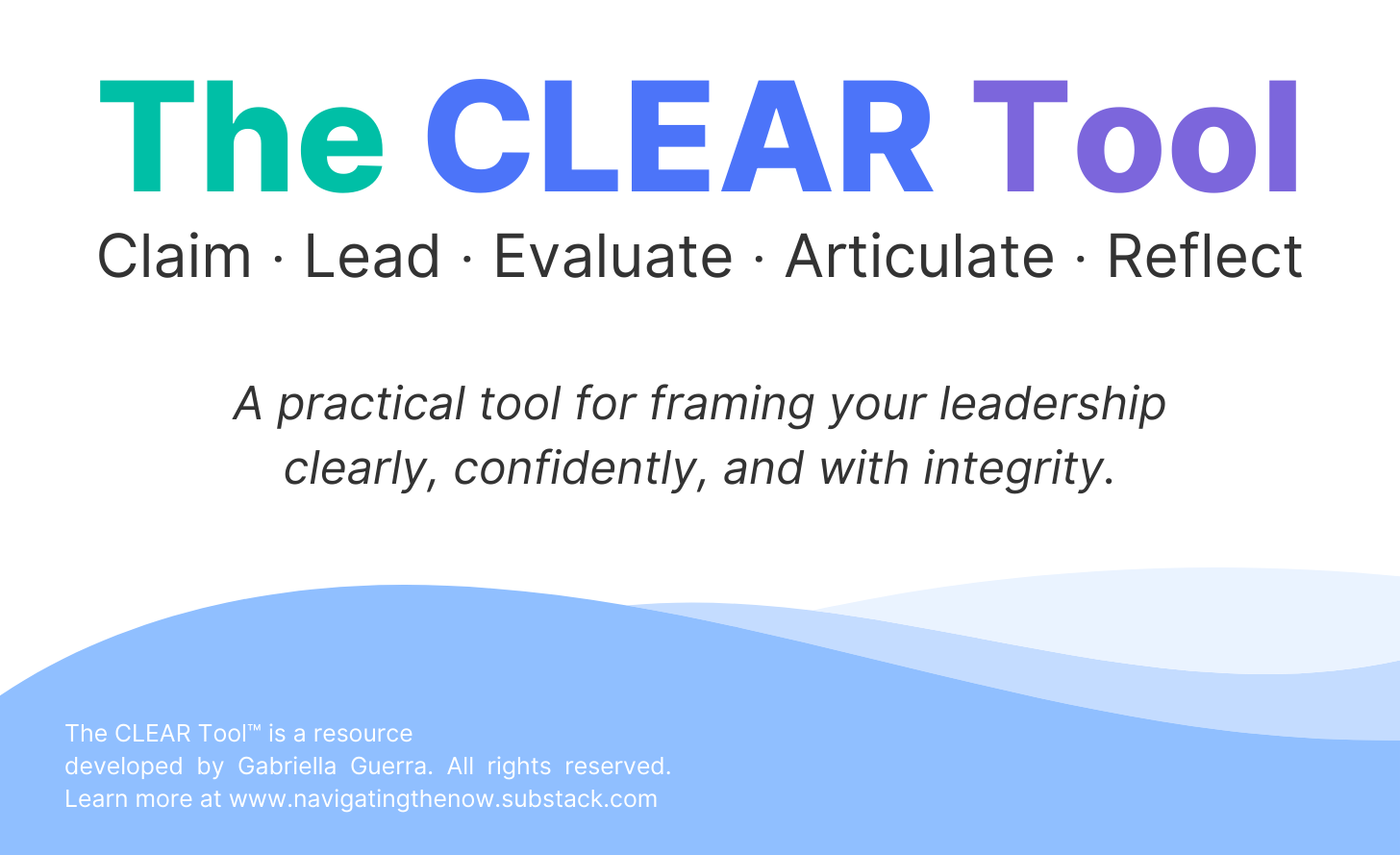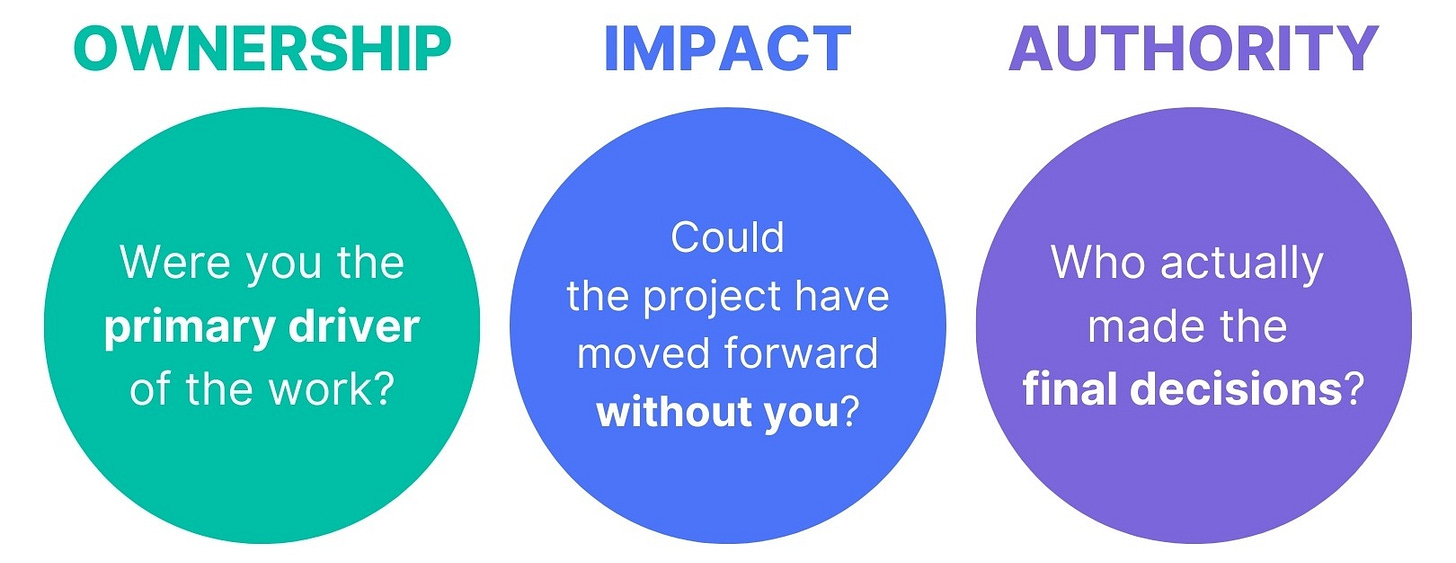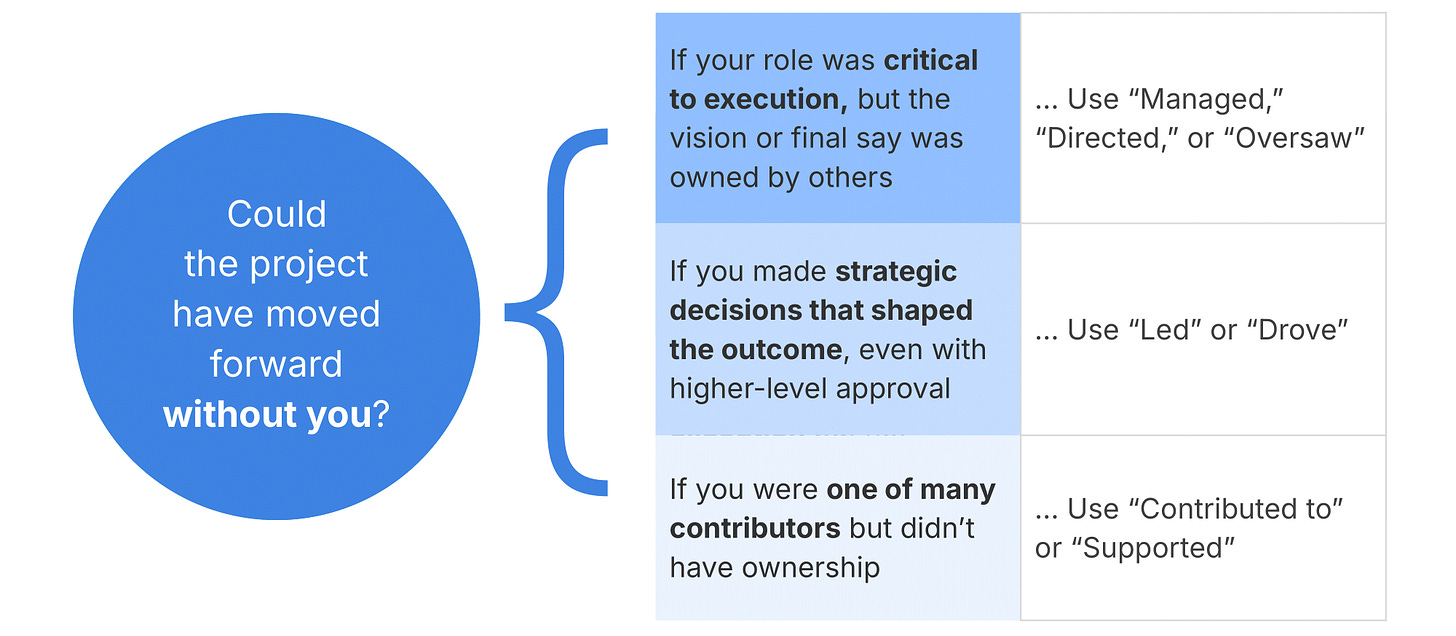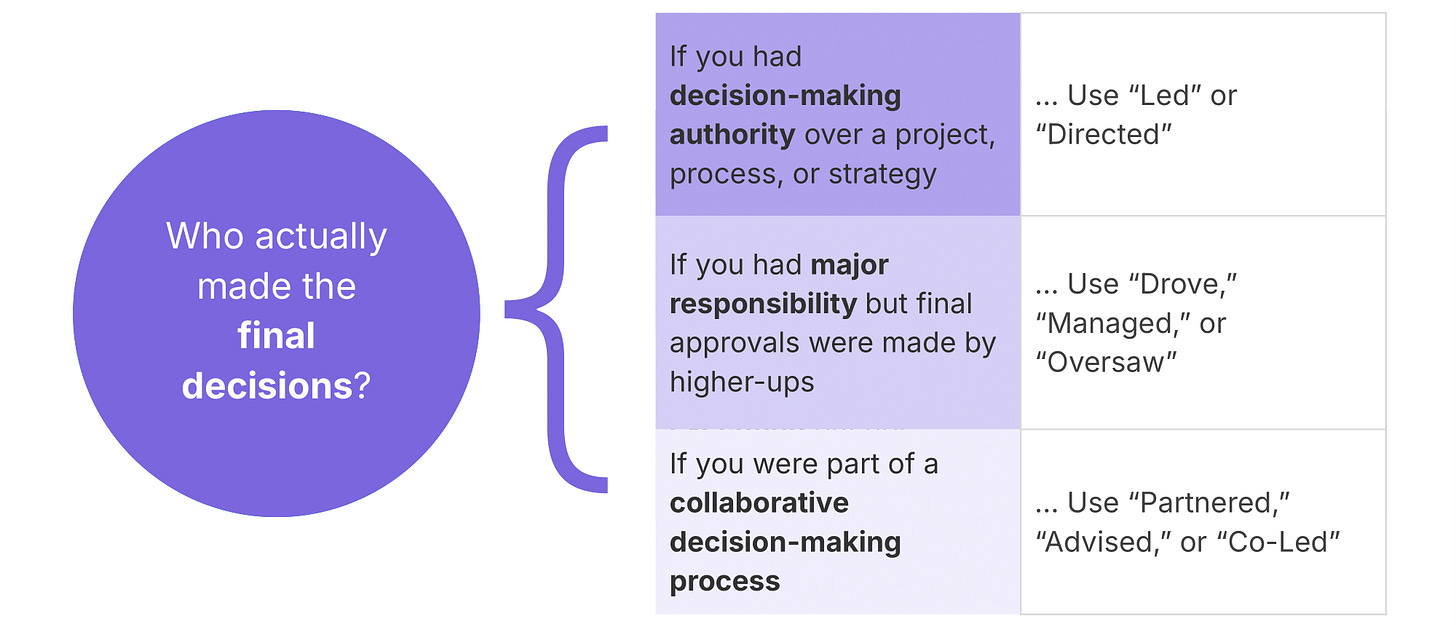How to Own Your Work Without Overselling It: Introducing The CLEAR Tool™
A practical tool for framing leadership with clarity—without overselling or playing small.
Resumes aren’t one-size-fits-all. What lands in one industry might fall flat in another—especially when it comes to how you frame your contributions. For those moving from the public sector, nonprofit, or academic spaces into private industry, the shift in expectations can feel jarring. When your work has always centered collective outcomes and public service, being asked to highlight individual impact can feel unnatural.
As I have tried to navigate this shift myself, I’ve asked recruiters across biotech, tech, and AI how they evaluate leadership on a resume. Here is the advice I heard loud and clear:
Hiring managers don’t care what your team did. They care what YOU did—and what YOU can do for them.
For those of us used to bidding on proposals as a team, this can feel like a culture shock. For those that need to hear this message, let’s be crystal clear: you have every right to own your leadership and your impact. Centering your contributions doesn’t diminish your team—it helps others see the value you bring.
If you’ve ever struggled to describe your leadership without overstating it, you’re not alone. The pressure to “sound like a leader” while staying honest about your role can feel impossible to get right.
That’s why I created The CLEAR Tool™: a practical approach to help you navigate that tension and choose language that reflects what you owned, why it mattered, and how you led, with clarity and confidence.
Before we get into how it works, let’s look at why this challenge exists in the first place.
Understanding the Cultural Differences between Public and Private Industry
Let’s step back for a moment to take a look at the key cultural differences between the public sector and private industry:
In government, academia, and nonprofits, collaboration, shared credit, and collective achievements are often emphasized.
In private industry, hiring managers expect clarity about individual contributions: What did you do? What decisions did you make? What outcomes did you drive?
That shift can feel uncomfortable if you're used to structuring your experience around teamwork rather than individual impact. It might even feel like you're taking up too much space… but if you don’t take up space, someone else will fill it for you, leaving you wondering why you keep getting passed over for positions you know you’re qualified for.
Here’s how these differences often show up in resume expectations across sectors:
External expectations aren’t the only barrier—many of us also face internal resistance when it comes to owning our work.
Psychological Barriers to Self-Promotion
For many professionals, shifting from “we” to “I” on a resume feels uncomfortable. Social norms, workplace culture, and internalized doubt all play a role—especially for women and folks from underrepresented backgrounds who are often conditioned to downplay success.1 In environments that value collective achievement, naming your contributions can feel like overstepping, and depending on your cultural background, humility might be a deeply ingrained professional value.2
Psychological research helps explain this discomfort. Modesty bias—the tendency to credit others for our successes while owning our failures—can shape how we talk about our work.3 While modesty is often culturally valued, especially in some collectivist contexts, research suggests that norms around self-promotion vary widely and are more complex than commonly assumed.4 Add to that the spotlight effect,5 which makes us believe others are scrutinizing us more than they actually are, and it’s easy to see why self-promotion can feel risky.
As a woman of color working in corporate America, one of the best (if slightly uncouth) pieces of advice I’ve ever received is the following (White Guys, you're welcome to play along too!):
Think about the Whitest Guy™ you know. Is he afraid of self-promotion? No? Then why are you?
We’ll dig deeper into this idea in an upcoming post about claiming your power. But for now, remember: if you want to grow into a leadership role, start moving like someone who belongs there. That includes how you talk about your work.
So, how do we speak—and write—like leaders? Let’s break it down with the CLEAR Tool.
Framing Your Leadership with Clarity: Introducing the CLEAR Tool™
Writing about leadership is tricky. You want to be clear about your contributions—without overstating your role or minimizing your value. For those whose careers have centered collaboration, public service, or shared success, that can be especially challenging.
To help navigate that tension, I developed The CLEAR Tool™—a structured reflection tool designed to help you communicate what you owned, why it mattered, and how you led—with clarity, confidence, and integrity.
Breaking Down the CLEAR Tool™
The CLEAR Tool offers five reflection points to help you describe your work more clearly and accurately:
C – Claim: Acknowledge and take ownership of your work
L – Lead: Identify where you initiated, directed, or influenced outcomes
E – Evaluate: Assess your role’s importance and overall impact
A – Articulate: Choose precise, intentional language to reflect your contributions
R – Reflect: Stay mindful of accuracy, integrity, and growth
CLEAR is grounded in three core questions that map to the guiding constructs of Ownership, Impact, and Authority, offering a flexible framework to help you describe your leadership in a way that reflects how you actually show up in your work.
1. Were you the primary driver of the work?
This question gets to the heart of Ownership—did you take the lead, share responsibility, or carry out someone else’s vision? Clarifying this helps you choose verbs and framing that accurately reflect your level of initiative and control, so you can describe your contribution with confidence and clarity—without overstating or understating your role.
Here are a few examples of how you might structure a sentence based on the verb you have selected to describe your ownership:
2. Could the project have moved forward without you?
This question speaks to your Impact—how essential your presence was to the project’s success. It helps clarify whether you shaped the outcome through strategic input, executed key functions, or contributed as part of a broader team. Your answer will guide you toward language that highlights direction, influence, or support—aligned with the value you added.
Here are a few examples of how you might structure a sentence based on the verb you have selected to describe your impact:
3. Who actually made the final decisions?
This question centers on your Authority—your role in shaping direction and making key decisions. Leadership isn’t just about doing the work; it’s about guiding outcomes. Your answer will help you frame whether you drove strategy, held major responsibility, or contributed within a collaborative decision-making process.
Here are a few examples of how you might structure a sentence based on the verb you have selected to describe your authority:
Closing Thoughts: From Reflection to Action
There’s a fine line between confidently owning your contributions and overstating your role—and it’s easy to land on either side. Maybe you’ve found yourself downplaying your leadership, or claiming too much in a context that was more collaborative. The goal isn’t perfection—it’s clarity.
The CLEAR Tool™ can help you navigate that nuance. By reflecting on your ownership, your impact, and your authority, you can choose language that aligns with your role and the leader you’re becoming. Most experiences don’t fit neatly into boxes, and that’s okay. What matters is being able to stand by your language and speak to your reasoning when it counts.
Framing your leadership is an ongoing practice—not a one-time edit.
If the CLEAR Tool helped you rethink how you describe your work, I’d love to hear what resonated. Drop a comment, share it with a friend, or subscribe for more tools to help you lead with clarity, confidence, and integrity.
Download The CLEAR Tool™ Social Media Toolkit to share with your networks:
Neelim, A., Mancuso-Tradedenta, J., & Vecci, J. (2017). Self-Promotion, Social-Image and Gender Inequality: Aiding Women Break the Shackles of Modesty .
Shi, Y., Sedikides, C., Cai, H., Liu, Y., & Yang, Z. (2017). Disowning the self: The cultural value of modesty can attenuate self-positivity. Quarterly Journal of Experimental Psychology, 70(6), 1023-1032.
Smith, J. L., & Huntoon, M. (2013). Women’s Bragging Rights: Overcoming Modesty Norms to Facilitate Women’s Self-Promotion. Psychology of Women Quarterly, 38(4), 447-459. https://doi.org/10.1177/0361684313515840 (Original work published 2014)
Min I, Cortina KS, Miller KF. Modesty bias and the attitude-achievement paradox across nations: a reanalysis of TIMSS. Learn Individ Differ. 2016;51:359–366. doi: 10.1016/j.lindif.2016.09.008. [DOI] [Google Scholar]
Gilovich T, Medvec VH, Savitsky K. The spotlight effect in social judgment: An egocentric bias in estimates of the salience of one’s own actions and appearance. Journal of Personality and Social Psychology. 2000;78(2):211-222. doi:10.1037/0022-3514.78.2.211






